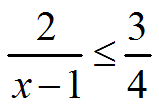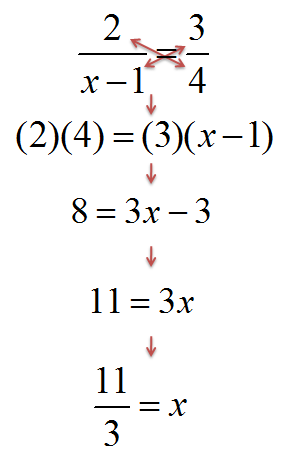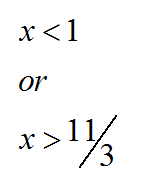Rational inequalities are inequalities that contain rational expressions.
For example:

|
Figure 1. |
|---|
To solve rational inequalities, follow these three steps:
1. Determine excluded values
2. Solve the related equation
3. Test values to determine valid intervals
The excluded values for our rational inequality are x = 1. Next, we solve the related equation:

|
Figure 2. |
|---|
Finally, we plot the known values on a number line and choose values within each interval to test which intervals are valid solutions:

|
Figure 3. |
|---|
Below, we've tested our three values. The first and third intervals are valid solutions, while the second interval is not.
|
|
Figure 4. |
|---|
Now, we have our solution:

|
Figure 5. |
|---|